Japanese green tea can be brewed in a number of ways. In this article, we will go over the Simple Way and the Advanced Way of brewing tasty green tea.
As you know, Japanese green tea can be categorized into two major types. Sencha and Matcha (See this article for the details about the differences), so we have segmented this article into two parts. Enjoy!
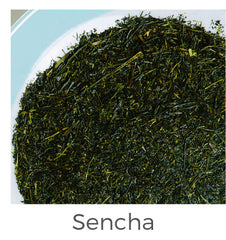

- Part 1: How to Brew Tasty Sencha
- Part 1: How to Brew Tasty Sencha
- Watch the video
- How to Brew Tasty Japanese Green Tea - The Simple Way
- How to Brew Tasty Japanese Green Tea - The Advanced Way
- Yuzamashi - Technique for Water Temperature
- How to Brew Cold Japanese Green Tea
- Other Points to Consider (Sencha)
- Part 2: How to Brew Tasty Matcha
Part 1 - How to Brew Tasty Sencha
Here is a short summary video that we made about this blog post. I hope this video can give you a quick overview. You can scroll down for more detail instruction that is covered in this video.
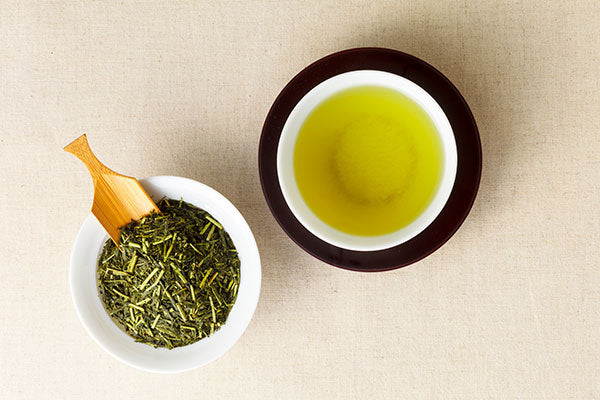 Sencha is steamed form of Japanese green tea which is usually consumed by steeping with teapot.
Sencha is steamed form of Japanese green tea which is usually consumed by steeping with teapot.
The Simple way is how most Japanese people consume green tea every day; the Advanced Way is what is being followed by professional green tea producers who recommends the best approach for brewing the tastiest Japanese green tea.
We recommend starting with the simple way and enjoying the approach for the Advance Way after trying out simple ways to appreciate the difference in taste and aroma that it brings.
How to Brew Tasty Japanese Green Tea - The Simple Way
This approach does not require any special equipment such as a teapot. You can use any type of mesh strainer to filter the green tea.
- Dissolve 1-2 teaspoons of powder into 8 Oz of hot water. We recommend about 175°F for the most common green tea.
- Wait for 60-120 seconds (Please follow steeping guide on the product for specific time based on type of tea.)
- Use a mesh strainer to filter out the green tea leave and serve hot
How to Brew Tasty Japanese Green Tea - The Advanced Way
|
1. Selecting the right teapot This approach requires a Japanese Tea Pot. There are different types of teapots, but for our green tea which is deep steamed green tea (Fukamushi-cha), we recommend the Fukamushi teapot which is made specifically for Deep Steam Green Tea. The characteristic of the Fukamushi tea pot is that it has finer mesh to be able to capture finer tea leaves as Fukamushi tea usually contains finer tea leaves than other types of green tea. The picture shown is 12Oz Fukamushi Tea Pot. You can purchase Fukamushi Tea pot here. If you do not have access to Fukamushi Tea Pot, you can use any type of teapot, but try to find ones with finer mesh. The finer mesh works for most types of green tea such as gyokuro as long as it is not powdered, so we always recommend a finer mesh teapot. |
|
2. Selecting and boiling water the right way Water is essential when brewing green tea. It is best to use soft water with fewer minerals to get the best result. Hard water with minerals breaks down elements in green tea which breaks the taste. If you have access to water-softer filtering systems, use water filtered by them. If using bottled water, do not use the ones with "Added Mineral". Evian tends to be recommended ones as they are known for soft water. Yuzamashi - Technique for Water TemperatureBoil water until 212°F for 4-5 minutes and cool down to 175°F. By boiling water first, it removes the smell of chloride. (Please note that our product page has different recommended temperatures based on the type of tea between 175°F - 185°F; however, 175°F can be the most common and standard temperature that would work for any type of our green tea) This approach in Japanese is called "yuzamashi" which translates to "cooled-down" water. |
|
3. Put green tea Put one spoon of deep-steamed green tea leaves (about 1-2 teaspoons) into the teapot. (1-2 teaspoons are good for 2~3 people, approximately 1 teaspoon is good for 1 person ) Please adjust the number of tea leaves according to your favor and the teapot which is used.
|
|
4. Put hot water Pour boiled water (8-10 Oz) which has cooled into the tea pot. The trick is to fill the teapot with 70% full of hot water. By doing so, it spreads the scent to the remaining 30 percent of the teapot which then pours into the teacups. |
|
5. Rotate teapot Rotate the teapot slowly for about 60 seconds. This allows green tea to open up and soak through hot water evenly. |
|
6. Pour green tea into the cup When pouring green tea into multiple tea cups, do not pour it one by one (cup 1-> cup 2-> cup 3). By doing so, green tea in cup1 is lighter than in cup 3 since the darker element of green tea tends to sit at the bottom of the tea. Pour little by rotating each cup. (cup 1->cup 2-> cup 3-> cup 1-> cup 2-> cup 3). For a 370cc teapot in the cup, rotate about 3-4 times between cups. This action makes each cup taste the same. |
|
7. Pour until the last drop Please pour to the last drop. The later drops tend to be darker in color. The last drops have the most amount of aroma and elements so you do not want to miss out on the best part. |
|
8. Enjoy! Hope you enjoy our mellow and tasty Japanese Green Tea poured in a traditional Japanese way. |
How to Brew Cold Japanese Green Tea
- Dissolve 3-4 teaspoons of powder into 30 Oz of cold water. For the best result, use filtered water, or bottled water. Alternatively, you can boil water and let it cool down until room temperature.
-
Keep in the refrigerator for 3 hours or more. Key point is to use a long time to dissolve. This way, sweetness increases, and it does not break down theanine and vitamin C. For the best result, let it sit overnight.
- Stir the water first, then use a mesh strainer to filter out the green tea leave and serve cold.

I have written an entire article about how to cold-brew Japanese green tea. You can read more here.
Other Points to Consider (Sencha)
Enjoy the Second Infusion
In Japan, it is common practice to do 2nd infusion to get 2nd cup. You can use the same green tea after pouring the first cup and infuse it one more time. The first infusion is called "Issenme", the second infusion is called "Nisenme". In order to get a tastier 2nd infusion follow the below steps.
- After the infusion, open the top of the teapot and let go of the hotness inside the pot. If you don't do so, the tea leaves inside the pot get warmer and cause to reduce the taste in the 2nd infusion.
- Follow the above steps except that you want to wait for 10 seconds rather than 60 seconds after pouring hot water. Use a higher temperature for the 2nd fusion.
-
Related Question from a customer: It was mentioned that the standard practice in Japan is to do a 2nd infusion of the tea. I've seen other places on the internet where it is mentioned that green tea can be steeped usually up to 3 times, or even more (depending on the quality of the tea), and this is common practice in Japan. Would 2nd infusions only be good for lower quality teas, or "non"-green teas?
Our Answer:
You can do 3rd and 4th infusions with any tea in my opinion. If the flavor comes out on the 3rd and 4th infusion is probably not related to the quality of the tea; but rather the type of tea.
For instance, if you use deep steam tea like our tea, you can infuse it many times because the tea has a lot more flavor that can come out. Please see this article about deep steam tea.
However, a type of tea like hojicha (roasted green tea) or kukicha does not do well on the second infusion even if it is good quality tea. They just do not have that strong of a flavor to extract the flavor.
We have a Private Facebook Group called Green Tea Club, and below is what people answered how many times they steep tea. Click here to join Green Tea Club.
We posted a more detail blog article about 2nd infusion. Click here or click on image below to read the article.
Relationship between tea and temperature of the water
When the temperature of the water is high, green tea gets bitter and changes the balance of the taste. So, it is important to boil water and cool it to some extent based on the bitterness you prefer.
When the temperature of the water is higher than 175°F, the taste gets bitter and has more astringent.
When the temperature of the water is below 140°F, the taste is less bitter.
See my other article "Everything you need to know about Water and Japanese Green Tea" for more detail about how to select water for your tea.
Oxygen is the enemy to your tea - Store your tea properly
How you store your tea is very important to make the most out of your tea. Here is an article explaining detail about the best way of storing tea.
Part 2 How to Brew Tasty Matcha
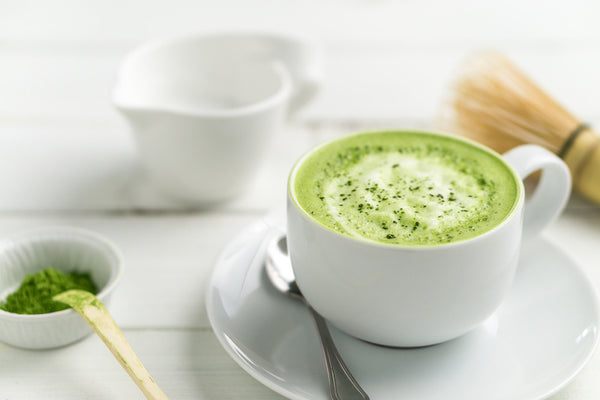
Unlike Sencha, Matcha is a powdered green tea that is grown and harvested in a more labor-intensive way to gain a unique quality of flavor, caffeine, and nutritional benefits. (Click here to learn more) Matcha is used in all Japanese tea ceremonies.
In this section, I will first show you the traditional way of preparing matcha, then will introduce you to a variety of ways to enjoy them.
Traditional Matcha Preparation - Koicha vs Usucha
There are two forms of matcha used in a Japanese tea ceremony. The first is usucha, which is thin green tea matcha. Usucha is the common form of matcha used during a daily tea ceremony. Usucha is harvested from the buds and leaves of the tea plant.
The second form is koicha, which is thick green tea matcha. Koicha is typically used in more formal Japanese ceremonies. Koicha is typically hand harvested from the choicest buds of older tea plants.
Both forms of matcha have a unique flavor and tend to be full-bodied, with a luxurious and grassy essence. But keep in mind that koicha matcha never can be created from usucha matcha. We recommend that you first try matcha usucha until you become accustomed to the deeper flavor of koicha matcha.
Usucha matcha and koicha matcha are made using similar utensils, but each has a slightly different process, resulting in the exclusive texture and flavor. The following gives you a step by step instructions on how to make delicious Japanese matcha.
Usucha Matcha Steps (Traditional Way):
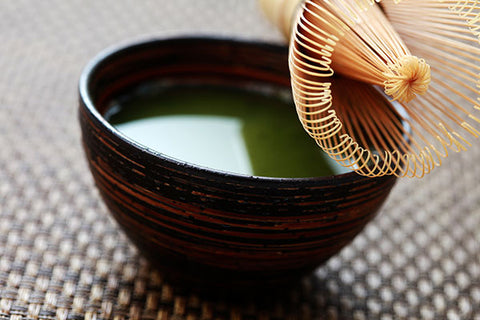 Usucha is harvested from buds and leaves of the tea plant.
Usucha is harvested from buds and leaves of the tea plant.Step 1.
Preheat your tea bowl by adding hot water. Place matcha bamboo whisk tips into water and let set (do not immerse the whisk completely – just the tips).
Step 2.
When your tea bowl is heated thoroughly, remove the bamboo whisk and water from the tea bowl. Dry tea bowl with a linen cloth.
Step 3.
Measure approximately 1/3 cup boiling water (70 ml or 2.3 oz) into a separate bowl and allow uit to cool to approximately 160°F (71°C) to 185°F (85°C) – here you can use a thermometer to cool the water to your preference.
Step 4.
Measure approximately 1 ½ to 2 scoops (approximately 1 ½ to 2 tsp or 2 grams) of matcha powder with a bamboo scoop or ladle, placing into a matcha powder sifter. Sift powder into tea bowl, gently shaking and spinning powder with a ladle to remove any powder clumps.
Step 5.
Once the water has cooled to the correct temperature, pour it slowly into a tea bowl.
Step 6.
Hold the tea bowl in one hand and take a whisk in the other hand. Whisk matcha and water rapidly and in an “M” and “W” pattern motion (left to right and up to down) until liquid has a thick foam on top with lots of tiny bubbles at the surface.
Step 7.
Pour matcha tea into a tea bowl or tea cup.
Step 8.
Enjoy tasty Japanese matcha - usucha.
Koicha Matcha Steps (Traditional Way):
 Koicha is typically hand harvested from the choicest buds of older tea plants
Koicha is typically hand harvested from the choicest buds of older tea plants
Step 1.
Preheat your tea bowl by adding hot water. Place matcha bamboo whisk tips into water and let set (do not immerse the whisk completely – just the tips).
Step 2.
When the tea bowl is heated thoroughly, remove the bamboo whisk and water from the tea bowl. Dry tea bowl with a linen cloth.
Step 3.
Measure approximately 1/4 cup boiling water (40 ml or 1.3 oz) into a separate bowl and allow it to cool to approximately 160°F (71°C) to 185°F (85°C) – here you can use a thermometer to cool the water to your preference.
Step 4.
Measure approximately 3 to 4 scoops (3 to 4 tsp or 4 to 5 grams) of matcha powder with a bamboo scoop or ladle, placing into a matcha powder sifter. Sift powder into tea bowl, gently shaking and spinning powder with a ladle to remove any powder clumps.
Step 5.
Once the water has cooled to the correct temperature, pour ½ of the water slowly into the tea bowl (this is important to avoid clumping).
Step 6.
Hold the tea bowl in one hand and take a whisk in the other hand. Whisk matcha and water slowly and in a kneading and circular pattern, until the liquid has become a thick and smooth consistency.
Step 7.
Add remaining hot water and whisk slowly until smooth. There should be no foam on top.
Step 8.
Pour matcha tea into a tea bowl or tea cup.
Step 9.
Enjoy tasty Japanese matcha – koicha.
Quick Cheat Sheet for Matcha Measurements
Here are cheat sheets summarizing the differences between koicha and usucha
For Usucha:
- 1/3 cup boiling water (70 ml or 2.3 oz)
- 160°F (71°C) to 185°F (85°C)
- 1 ½ to 2 scoops (approximately 1 ½ to 2 tsp or 2 grams)
For Koicha:
- 1/4 cup boiling water (40 ml or 1.3 oz)
- 160°F (71°C) to 185°F (85°C)
- 3 to 4 scoops (3 to 4 tsp or 4 to 5 grams)
Other Points to Consider (Matcha)
- Drink the matcha tea immediately after it is prepared, as the matcha powder can settle to the bottom of the tea bowl.
- Make sure to allow your water to cool after boiling, or the matcha will be bitter.
- Make sure to whisk the matcha tea completely, or the matcha will be bitter.
- Make sure to whisk usucha matcha until a thick foam with tiny bubbles appears so the flavor is not bitter.
- Make sure to whisk koicha matcha so it is smooth with no foam or froth when complete.
- Make sure your matcha powder is sifted into the tea bowl to aver clumps
- If your usucha matcha does not froth, check to make sure you have used sufficient matcha powder or too much water
- If your usucha matcha does not froth, check to make sure you have whisked enough
- Store unused matcha powder in a dark and cool place, and use opened matcha as quickly as possible to maintain freshness
- Usucha bamboo whisks typically have 50 to 125 thin prongs
- Koicha bamboo whisks typically have 32 to 48 thick prongs
- Matcha contains a higher level of caffeine than other teas. Unlike coffee, however, matcha is absorbed slowly by the body and gives a slower, more consistent level of energy (6 to 8 hours). Additionally, matcha does not typically produce the negative effects, such as the “jitters”, associated with caffeine.
How to Enjoy Matcha - Non-Traditional Way
Now that we have covered the traditional ways, here’s where it gets more interesting. Matcha can be used in variety of ways and we have many articles exploring different ways of using matcha in non-traditional ways. Here are some popular ones.
Matcha isn’t just delicious to drink. Healthful Japanese matcha is an incredible addition to make unique matcha recipes from your simple regular recipes. Now that you know how to create tasty Japanese matcha, try more delicious matcha recipes that include the health benefits and unique flavor of tasty Japanese green tea matcha.
For more delicious ways to try tasty Japanese matcha in cooking, take a look at my book, Cook With Matcha & Green Tea.
Get Free Bonus Books

Sign up for free to the Green Tea Club to get advice and exclusive articles about how to choose Japanese Tea, and tips, tricks, and recipes for enjoying Japanese tea.
About the author
Kei Nishida
Author, CEO Dream of Japan
Certification: PMP, BS in Computer Science
Education: Western Washington University
Kei Nishida is a passionate Japanese green tea connoisseur, writer, and the founder and CEO of Japanese Green Tea Co., a Dream of Japan Company.
Driven by a deep desire to share the rich flavors of his homeland, he established the only company that sources premium tea grown in nutrient-rich sugarcane soil—earning multiple Global Tea Champion awards.
Expanding his mission of introducing Japan’s finest to the world, Kei pioneered the launch of the first-ever Sumiyaki charcoal-roasted coffee through Japanese Coffee Co. He also brought the artistry of traditional Japanese craftsmanship to the global market by making katana-style handmade knives—crafted by a renowned katana maker—available outside Japan for the first time through Japanese Knife Co.
Kei’s journey continues as he uncovers and shares Japan’s hidden treasures with the world.
Learn more about Kei
















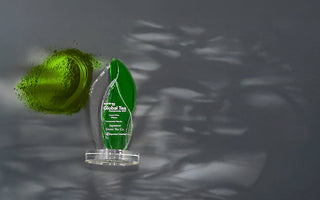

Thank you very much Lin. : )
In depth directions, makes the green tea sound delicious.